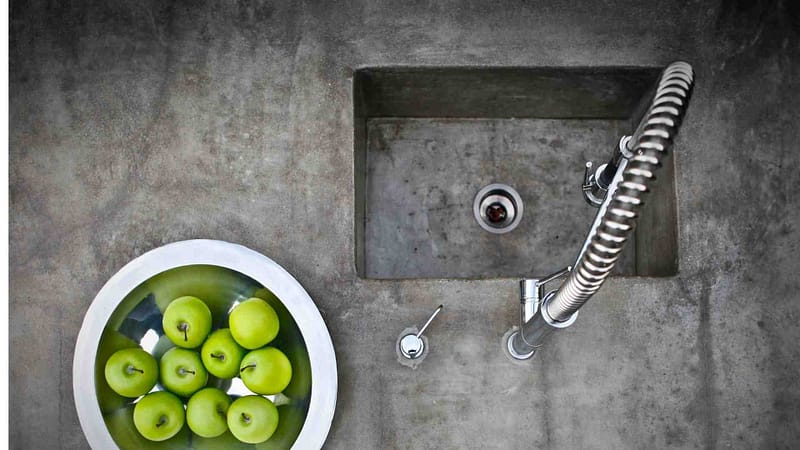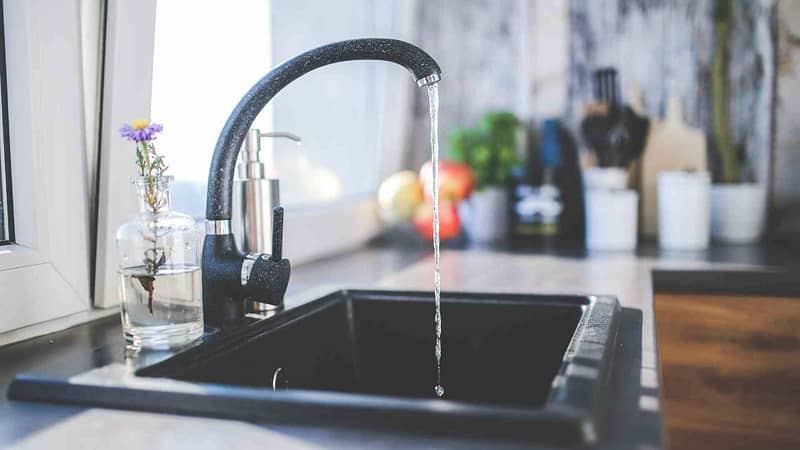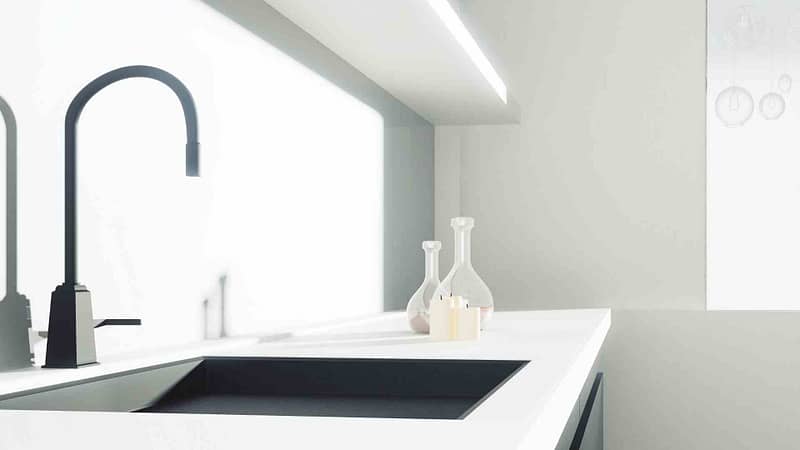In the realm of kitchen renovations, the choice of sink material plays a pivotal role in defining the space’s functionality and aesthetic. Among the myriad of options available, concrete sinks emerge as a distinctive choice, marrying industrial chic with unparalleled durability. This guide explores the merits and considerations of adopting a concrete sink for your kitchen, providing insights into maintenance, cleaning, and the use of specific cleaning agents like bleach, to help you make an informed decision.
Table of Contents

The Case for Concrete Kitchen Sinks
Concrete sinks, with their exceptional durability, customizable aesthetics, and ideal heat resistance, stand out as perfect additions to any kitchen. Their robustness and unique appearance not only enhance functionality but also elevate the style of your cooking space, making them an excellent choice for modern homes.
Concrete sinks stand out for their exceptional durability. Made from a mixture of cement, aggregates, and water, they’re designed to withstand the rigors of daily kitchen use, from hot pots and pans to accidental drops of heavy utensils. This resilience makes them a practical choice for a high-traffic environment.
Aesthetically, concrete sinks offer a unique appeal. Unlike mass-produced sinks, each concrete basin can be customized in terms of color, finish, and size, allowing homeowners to tailor their sink to their specific design vision. Whether you’re aiming for a sleek, minimalist look or a more rustic, textured appearance, concrete delivers versatility.
Furthermore, concrete’s heat-resistant nature is a significant advantage in the kitchen. It can handle the placement of hot cookware directly from the stove or oven without risk of damage, providing both convenience and peace of mind.

Understanding the Challenges of Concrete Sinks
- Weight: Requires sturdy support.
- Porosity: Potential for staining and water damage.
- Maintenance: Regular sealing needed.
While concrete sinks are durable and aesthetically pleasing, their weight requires sturdy support, their porosity can lead to staining and water damage, and they necessitate regular maintenance through sealing to preserve their integrity and appearance.
The weight of concrete sinks poses a significant consideration, as their substantial mass demands robust cabinetry and support structures. Before installation, it’s essential to ensure that your kitchen’s existing infrastructure can accommodate this weight without risk of damage or instability.
Porosity is another inherent characteristic of concrete that can lead to potential drawbacks. Unsealed concrete can absorb liquids, leading to stains and water damage over time. However, this challenge can be mitigated through the application of a high-quality sealant, which creates a protective barrier against moisture and stains, preserving the sink’s beauty and functionality.
Maintenance of concrete sinks involves a commitment to regular sealing, typically once a year, to maintain their water and stain-resistant properties. This preventive measure keeps the sink looking pristine and extends its lifespan, ensuring that it remains a focal point in your kitchen for years to come.


Maintaining and Cleaning Concrete Kitchen Sinks
Maintaining concrete kitchen sinks involves routine cleaning with mild soap and water, promptly addressing spills to avoid stains, and applying sealant to guard against damage. These practices ensure your sink stays in pristine condition, blending functionality with enduring style in your kitchen space.
Maintaining the cleanliness and appearance of your concrete kitchen sink requires regular care. For daily cleaning, a soft cloth or sponge and mild, non-abrasive soap are recommended to remove everyday dirt and grime without damaging the sealant or the concrete’s surface. It’s important to avoid harsh chemicals or abrasive scrubbers that can erode the protective finish and expose the porous concrete to stains and damage.
In the event of spills, particularly acidic substances like vinegar or lemon juice, prompt cleanup is crucial to prevent the concrete from absorbing the liquid and developing stains. Regularly applying a high-quality sealant according to the manufacturer’s recommendations can significantly enhance the sink’s resistance to staining and water damage, preserving its aesthetic and functional qualities over time.
Using Bleach on Concrete Sinks
Using diluted bleach for occasional deep cleaning of concrete sinks requires caution due to its possible effect on sealant. To safeguard the sink’s finish and maintain its integrity, alternative cleaning methods are advised.
Bleach is a powerful cleaning agent that can effectively kill germs and brighten surfaces. However, its use on concrete kitchen sinks should be approached with caution. If you decide to use bleach for deep cleaning, it should be diluted significantly with water (a recommended ratio is one part bleach to ten parts water) to mitigate its harshness. This solution can be applied sparingly and rinsed thoroughly to minimize any potential damage to the sink’s sealant and finish.
It’s essential to note that frequent or undiluted use of bleach can degrade the protective sealant applied to concrete sinks, increasing their vulnerability to stains and damage. For routine cleaning and maintenance, milder solutions are preferable to keep your sink looking its best.
For homeowners concerned about preserving their concrete sink’s longevity and appearance, exploring alternatives to bleach is advisable. Natural cleaning solutions, such as baking soda and vinegar, can provide effective cleaning without the harsh effects associated with bleach, ensuring your sink remains a durable and attractive feature in your kitchen.

Conclusion
Concrete kitchen sinks offer a unique blend of durability, aesthetic versatility, and functionality, making them a compelling choice for homeowners looking to infuse their kitchens with industrial chic or rustic charm. While challenges such as weight, porosity, and maintenance exist, proper installation, regular sealing, and cautious cleaning can mitigate these issues, ensuring your concrete sink remains a beloved and long-lasting component of your kitchen.
For further insights on incorporating concrete sinks into your kitchen design and maintaining them, visit our comprehensive resource center. Our expert advice and practical tips are designed to assist homeowners in navigating the nuances of kitchen renovations, ensuring results that beautifully blend form with function.






